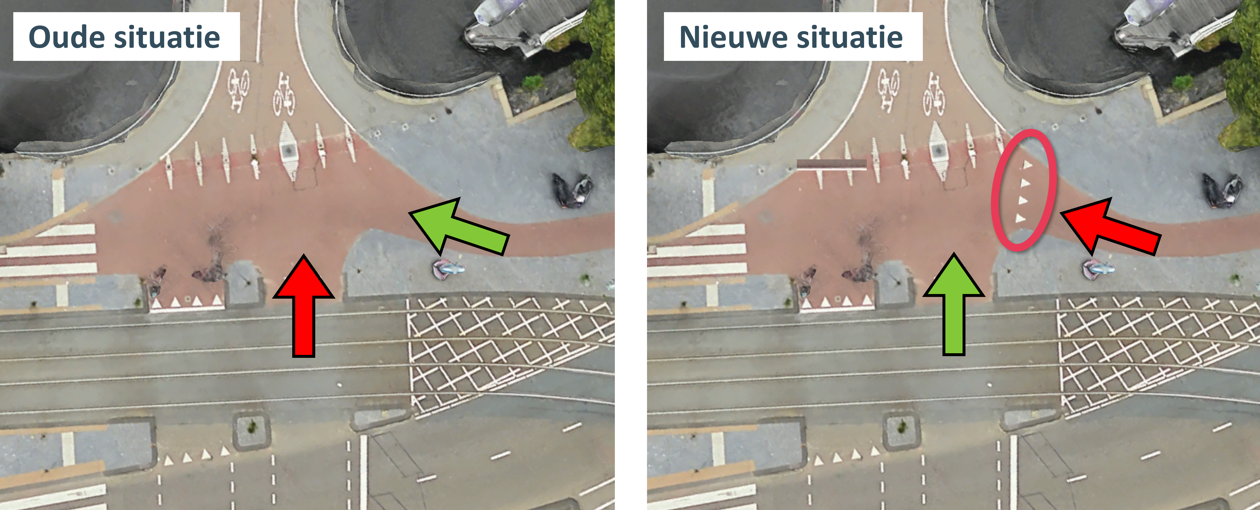Succesful test with turned around priority
The trial in which the priority between cyclists was turned around at three intersections in Amsterdam was a success. Both objective and subjective road safety improved, according to research by engineering firm DTV.
At three intersections, Weesperplein – Sarphatistraat, Max Euweplein – Vondelpark and Stadhouderskade – Museumpassage, the priority between cyclists was turned around in November. By displacing the ‘shark teeth’, the triangular road marking for priority. In the former situation, cyclists who had crossed the roadway (descending cyclists) had to give way to crossing bicycle traffic from the right (crossing cyclists).
In the adjusted situation this was turned around. Cyclists who have crossed the roadway have priority over cyclists coming from the right. The effects of this change were investigated with camera research, and a questionnaire among cyclists.
At 2 of the 3 intersections, there were fewer confrontations between cyclists after the shark teeth had been displaced. No decrease was observed at the intersection Weesperplein – Sarphatistraat. There, the number of confrontations was already low before displacing the shark teeth because many cyclists behaved as if the priority had been changed, reports project leader Naomy Gutierrez of the municipality of Amsterdam.

Weesperplein old vs new situation
Clearer and safer
Although many cyclists hadn’t noticed that anything had changed at the three intersections, after being made aware of the change, cyclists rated the new situation as clearer and safer.
Gutierrez is not surprised: ‘We actually knew this; it is no surprise. Also, the priority at the intersection of Vondelpark and Amstelveenseweg has been arranged this way since 1998 and we never actually receive any complaints about it. Experiences in other municipalities such as Nijmegen and Den Bosch also confirm that this solution works well.’
Legal difficulties
The similarity between these intersections is that the flow of cyclists crossing the priority road is larger than the number of cyclists riding on the cycle path along the priority road. Legally, changing the priority amongst cyclists is difficult as the cycle path is legally part of the priority road and should have the same priority regime. Therefor the trial in Amsterdam is closely monitored by national knowledge centre CROW. Now that the research results are positive, they will in particular investigate the legal aspects.
Follow-up
Changing the priority between cyclists will probably be applied at more intersections in Amsterdam. In the survey, cyclists could indicate which location would also be suitable for this solution. The municipality will further investigate the top ten most frequently mentioned intersections. At the three intersections in the study, the current priority between cyclists will be retained.

Rijksmuseum old vs new situation

Max Euweplein Vondelpark old vs new situation
Interesting documents








